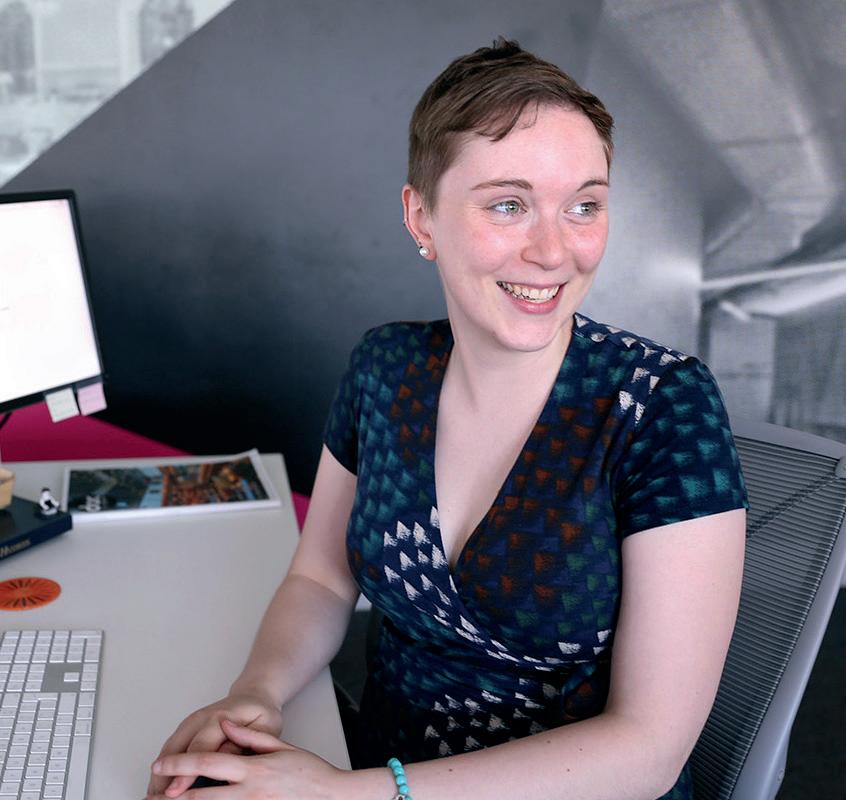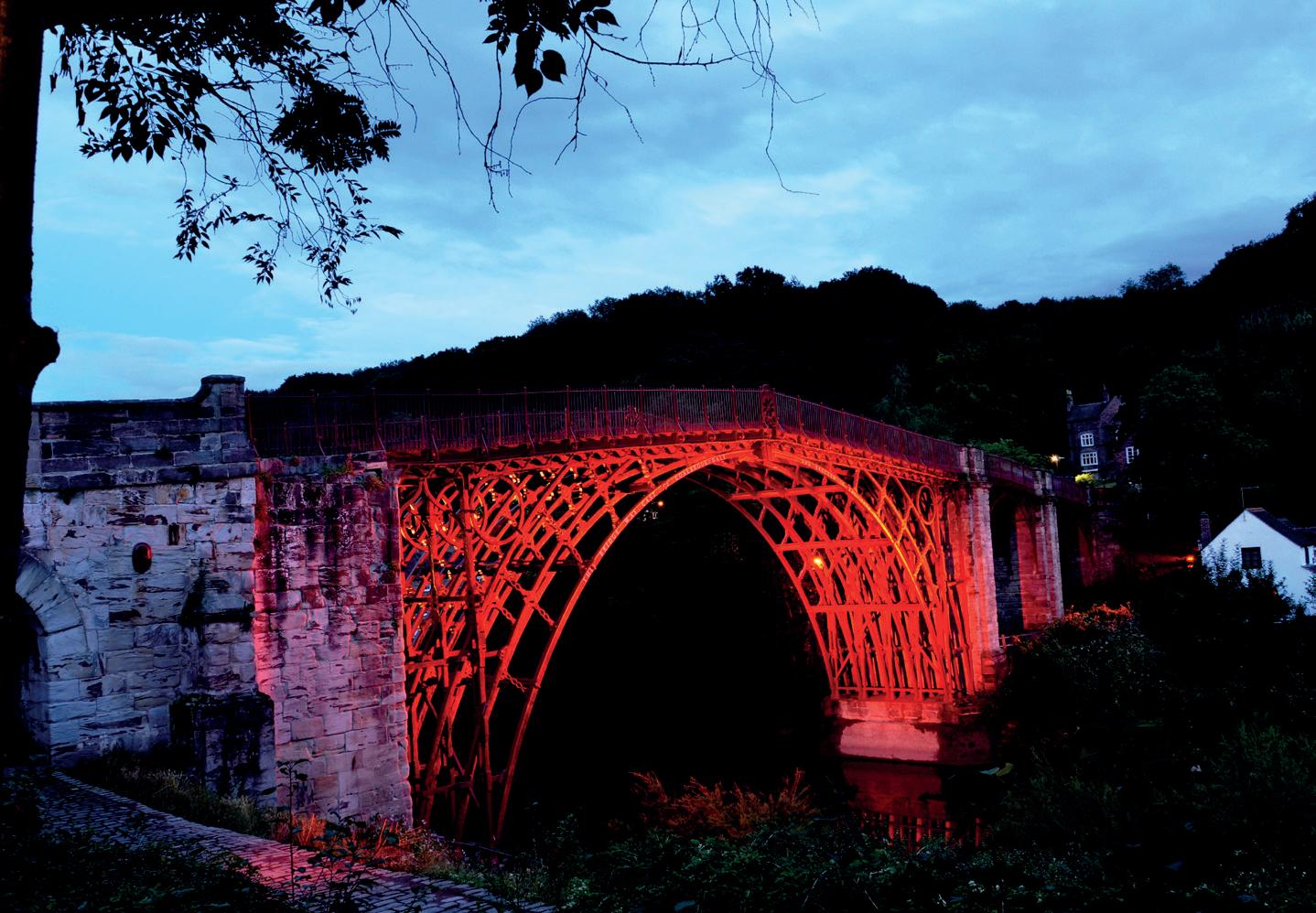
6 minute read
WELL CONNECTED
We find that empathy is one of the greatest gifts that can be given to someone who is in need. Once you feel that you can relate your problems to the problems of others, the burden lightens; as the saying goes 'a problem shared is a problem halved'. By encouraging designers across all walks of life to tell their stories, we hope that we can foster camaraderie across the creative industry.
In the lighting design world, we have been so pleased to see very personal insights and stories emerge in the past year through WIL (Women In Lighting). This community was launched by Light Collective, on top of their many other activism projects, as a way to bring women in lighting design together and to the forefront of their industry. WIL’s interviews and blog posts tell incredible stories of women all over the world, all roughly focused around their fascination with light. Interviewees share stories about their passion for design, their families, their projects, their periods and everything in between. Through this initiative, relationships have been formed between strangers on opposite sides of the earth as mentors, friends and allies. According to Sharon Stammers, co-founder of WIL, one of the main positive feedbacks from the WIL project
Advertisement
1 in 6 workers experience a mental health problem at any one time1
Employee mental health issues cost UK companies £45bn a year due to lost production, presenteeism, absenteeism and recruitment1
There were 602,000 cases of work-related stress, depression or anxiety in 2018/2019 in Great Britain2
It costs business an annual £1300 per employee whose mental health needs aren’t supported2 1 Deloitte 2019 Report: Mental Health and Employers – the case for refreshing investment (January 2020) 2 MHFA England website (June 2020) – Designers Mind (figures based on UK data and not specific to the design profession) is how many people have felt empowered by hearing the honesty of those women interviewed. By admitting frailty, fear, doubt and being open about intimate and personal issues, the interviewees have paved the way for all of us to speak more freely about the things that affect us outside our work and how it impacts our lives.
During the summer lockdown, we were asked to give a short presentation on the topic of wellbeing as part of the SLL webinar series focused on health and design. We were honoured to be able to talk to this very broad community about how the company was founded, who we are, and how we felt our initiative could assist people in lighting and engineering. The more discussions we have with specific designers, the more we have come to realise that the forum we are trying to establish serves a universal purpose across many design disciplines.
Beyond looking to form a community, we are also strong advocates of education, not only to understand ourselves better but also to understand the wider social mores behind wellbeing. We are four designers whose work focuses on creating spaces in the built environment around the ideals of safety, welfare and health.
As a collective, we are also working to advocate for employers to do their part in establishing healthy practices for the people who inhabit these spaces. Companies have a duty to support their employees in a holistic way; as much as it may be a bother, it isn’t possible to put your personal life on the shelf while at work. In this vein, we are encouraging employers to go beyond the requisite EAPs (Employee Assistance Programmes) and government minimums and truly try to understand what support their employees want and need. Establishing good practices at the office would invariably reinforce what employees will be doing with their own personal toolboxes. By establishing a strong baseline of healthy choices and support systems, such as bike shares, gym memberships, financial counselling, extended parental leave and so on, employers create a system of trust with their employees. All members of staff should have an established road map for how to help themselves not only in the event of loss, burnout, or illness, but also in navigating effective communication in the workplace on a day-to-day basis.
Core contributing team
Kaye Preston (founder), interior designer, WELL AP, wellness consultant, health coach Kael Gillam, lighting designer Rosalind Poerwantoro, interior designer, Fitwel ambassador, MHFA, interior landscaper Rhiannon Laurie, workplace design strategist, WELL AP, BREAM AP, LEED AP, Fitwel ambassador

Kaye Preston (top), interior designer, WELL AP and health coach, and Kael Gillam, senior lighting designer at Nulty+, gave a presentation on 22 July as part of the SLL webinar series focused on health and design. To see the webinar go to www.gotostage.com/channel/9 9978c30d5d3478486d85f02f912d1bc/ recording/c511645aa0e04194b82ac1a 47813565d/watch
For more details go to www.designers-mind.com or email info@designers-mind.com

Goalposts were also moved midstream, as it were, when English Heritage discovered patches of the original paint colour, a redbrown, mahogany shade, and decided to repaint the whole bridge back into this colour. Mid-way through the lighting design, with budgets outlined and equipment sizes approved, the paint finish changed from a 25 per cent reflective mid-grey tone receptive to most colours, to a five per cent reflective red-brown. To maintain the required luminance with a much lower reflectance needed projectors with much higher lumen packages, and commensurately larger and more expensive, and needing larger, more visible columns. 'Instantly a relatively straightforward project became three years of careful negotiation and the overcoming of numerous challenges,' say Peck and Bohannon. Detailed computer models of the SPANNING THE bridge and gorge were made to determine quantities and aiming angles to ensure uniformity, while minimising glare and spill light through the filigree structure. CENTURIES To gain planning permission, with the support of Historic England, the use of wooden columns was proposed to soften the daytime appearance. These had bespoke brackets to bunch the projectors tightly together to reduce height, and custom bases to ensure that the wooden shafts were well Two SLL presidents, past and present, came together to above extreme flood levels. These were then located in as unobtrusive places as create the new lighting for the historic Iron Bridge possible. The floodlights are mainly narrow beam, cross aimed horizontally to capture as much light as possible on the solid stone t's probably not every day that old flood fittings. The challenges were many: abutments to minimise glare and spill light.
Iyou have a former and current SLL president working together luminaires were subject to regular flood risk, nothing could be mounted on or under Overcoming cabling restrictions, automatic controls talk across the river on a lighting project, in this the bridge, cables could not be run through by radio, while GSM links enable Telford case a historic landmark. What's more, it or across it, and daytime visual intrusion and Wrekin Council to change programmes is located in the backyard of the Lighting of any installation had to be minimal. from any computer or smartphone. Industry Association academy where both It also had to illuminate the downstream The final effect delivers a warm white light Bob Bohannon and Liz Peck teach. side which had previously been left dark scheme during the week and an innovative
The scheme was for the Iron Bridge from a key viewing point. dynamic ‘furnace mode’ of red and amber in Shropshire, the first bridge in the overlaying a dimmed back white scheme world made of iron and the forebear for the weekend. The dynamic effect is of modern metal-framed buildings. created by altering the intensity of the It is a worldwide icon for the start of the Industrial Revolution. ‘Imagine the effect of red and amber floodlights across the bridge, suggesting the movement
English Heritage undertook a the bridge lit by the fires of the light from the fiery £3.6m conservation project in 2017-18, which was marked from the furnaces and forges of skies of Coalbrookdale. The scheme was launched with the new lighting scheme replacing 40-year- Coalbrookdale,’ – Morgan Cowles , during the Ironbridge Festival in September.
head of conservation and heritage
14 at English Heritage, Sunday Times sll.org.uk





